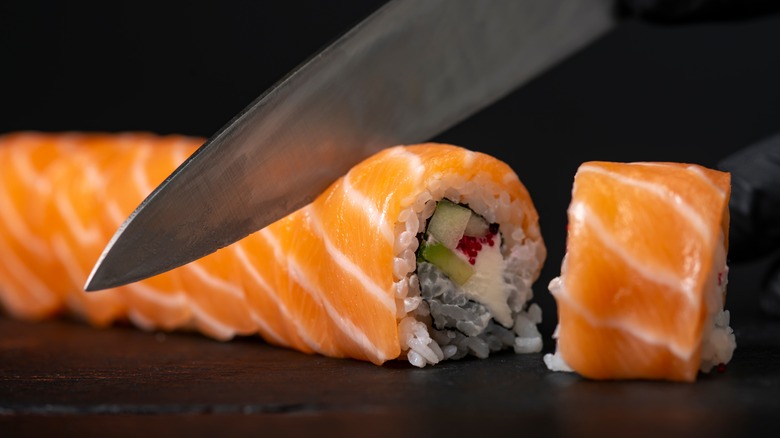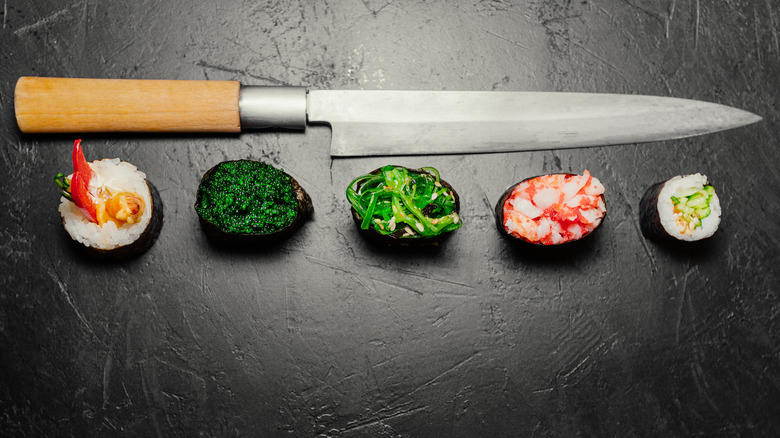The Ideal Knife To Cut Sushi Looks More Like A Sword
Making sushi at home is a labor-intensive, but tremendously rewarding process. Not only are the right ingredients — such as rice, vinegar, and toppings like tobiko, fresh fish, and egg — important to your success, but so is the necessary equipment. There are two essential tools for sushi-making: a rice cooker and the proper, razor-sharp knife.
When it comes to what kind of knife is best, Chef Cheng Lin of Shota Omakase in Brooklyn, New York, has a clear answer. "The Japanese yanagi knife is special for slicing fish fillets (boneless) into sashimi and toppings for sushi," he told Food Republic. While 30-centimeter yanagi knives are the most common, Chef Lin prefers a 33-inch version, though the length you choose is a matter of personal comfort and preference.
Yanagi knives feature long, slim blades that bear a strong resemblance to Japan's most famous sword, the katana. The highest-quality knives are made in the honyaki or "true-forged" style, using steel with a high carbon rate, which is known to hold its sharp edge particularly well. Yanagi knives are traditionally honed by hand until sharp enough to slice delicate fish without bruising or damaging the meat. This tool gives you a smoothness and precision that makes for beautiful-looking sushi or sashimi, with an even thickness and no torn edges.
More expert recommendations on the best sushi knives
While yanagi knives are best for cutting delicate fish, there are other options for those looking to round out their kitchen equipment. Chef Cheng Lin says that just three knives can cover practically all needs a home sushi chef might have: a yanagi knife, a gyutou knife, and a deba knife. According to Lin, "You can do pretty much anything" with these tools, making buying an elaborate and expensive knife set less necessary.
A gyutou knife is a unique Japanese chef's knife, and Chef Lin's go-to for cutting sushi rolls. "It's a multitasking knife," he added. "You can cut meat, fish, and vegetables, making it suitable for preparing anything." The shape of the gyutou blade, with its sharp, precise tip and flat base, is good for both fine cutting or chopping and mincing. Maintenance is easy, too — Chef Lin says your gyutou can simply be cleaned with soap, rinsed thoroughly with warm water, and dried with a paper towel.
Meanwhile, deba knives boast thick, heavy blades that are often used for cutting through fish heads, small bones, and tendons. While not ideal for cutting through thick bones, deba are designed to skin and fillet whole fish, and can also break apart thin bones and cartilage in meat like chicken. No matter what knife you use and for what purpose, Chef Lin cautions to store your tools in knife covers, which protect the blades and prevent accidental injuries.


